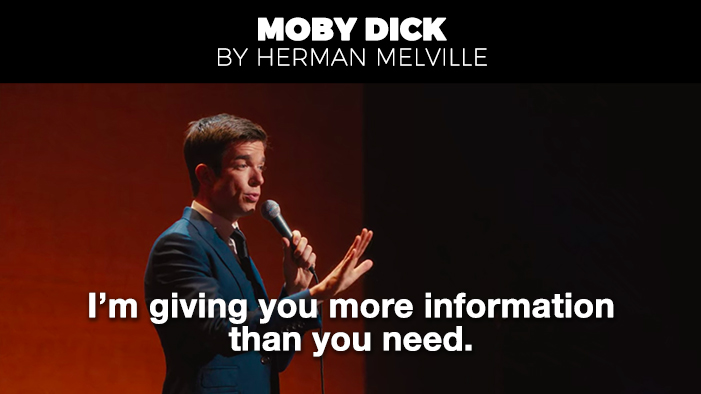John and Mary meet.
What happens next?
If you want a happy ending, try A.
These three short lines begin the story and lead into story variation A. They raise immediate questions about the narrator and the audience. As often happens in metafictional stories, the narrator engages readers and inserts herself into the story’s plot, commenting on what happens and what it means. Here, so early in “Happy Endings,” it’s not clear whether the you whom the narrator addresses is any reader or specific readers, but the narrator seems to promise what the story’s title names—a happy ending for two people who meet. However, the verb try is somewhat tentative. The narrator doesn’t say, “John and Mary have a happy ending in A” or “The story ends happily in A.” Instead, the narrator leaves two decisions to readers: whether to try story variation A or read a different variation, and whether to deem the ending of A “happy.” This kind of engagement of readers as co-creators of meaning in a story is also an element of much metafiction.
John is married to a woman called Madge and they have two children, a charming house which they bought just before the real estate values went up, and hobbies which they find stimulating and challenging, when they have the time. John tells Mary how important she is to him, but of course he can’t leave his wife because a commitment is a commitment. He goes on about this more than is necessary and Mary finds it boring. . . .
These lines are from story variation C, but they echo and connect to other story variations so that C is interlocked with variations B, D, and E, all of which refer to variation A. Not only do characters (John, Mary, Madge, unnamed children) recur, but the house and its value recur, and the phrase “stimulating and challenging” recurs. This phrase describes, in various places, couples’ careers, sex lives, and hobbies. Here, it is qualified by a clause, “when they have the time,” suggesting that this description that many readers would agree is positive and desirable is less a given than variation A suggests it is.
One element of metafiction is recurring motifs, symbols, or other literary elements with the recasting of these elements to draw out both similarities and subtle distinctions. In “Happy Endings,” this repetition supports the narrator’s later contention that plots are all “one thing after another.” The basic events, settings, and props of characters’ lives are not necessarily what draws readers to stories and don’t, in the narrator’s opinion, vary much in their essence. The intentional repetition suggests that engaging conflict and satisfying resolution are derived from the characters’ motivations, their “How and Why,” rather than from these commonalities. A story is more than its plot events.
The only authentic ending is the one provided here:
John and Mary die. John and Mary die. John and Mary die.
So much for endings. Beginnings are always more fun. True connoisseurs, however, are known to favor the stretch in between, since it’s the hardest to do anything with.
These lines come after story variation F, by which point in “Happy Endings” the story’s audience, as the fictional narrator imagines, is clearer. The you the narrator addresses is someone interested in writing stories, someone whom the narrator wants to acknowledge the paradox of realistic stories: everyone dies in the end, even if the storyteller omits that information. Endings are easy, and they’re never unambiguously happy. In variation D, Madge and Fred survive a tidal wave that kills thousands, and they are grateful and “continue as in A”—except that in variation E, the narrator says, “Yes, but. . . .” Fred is unwell and dies, or Madge is unwell in a different way and dies. The deaths are interchangeable because whether Fred or Madge dies, the other also dies, just a little later.
Beginnings are “fun” for writers, a story’s ending is inevitable, but the work of story happens in the middle. This is when writers do the hard work of the “How and Why,” and it is what makes story variations B and C, with their well-developed and psychologically fraught characters, more interesting than story A. Even variations D and E, in which Fred and Madge are less developing, are far more engaging than the “happy” but uneventful marriage narrated in variation A. The “stretch in between” is where stories happen.
That’s about all that can be said for plots, which anyway are just one thing after another, a what and a what and a what.
Now try How and Why.
These lines close “Happy Endings,” and they strengthen the inference that the narrator has presented the story variations as a way of discussing the paradox of storytelling: structure is apparently limited, beginnings mundane, endings unvaried and preordained, and yet story as a form of communication can be endlessly varied, escaping stale predictability and continuing to engage readers. The “what” and “what” of plot will be variations on old, well-worn themes, but the “How and Why,” because they are the human elements of story, continue to prompt writers to keep tinkering with beginnings, middles, and endings. They draw readers to story, even though no story about humans can ever truly have a happy ending. The story’s final line is an injunction, an imperative to keep trying to write, read, and understand how humans, and the fictional characters who play them on the page or screen, keep trying to reach “happily ever after” anyway.


 payment page
payment page



